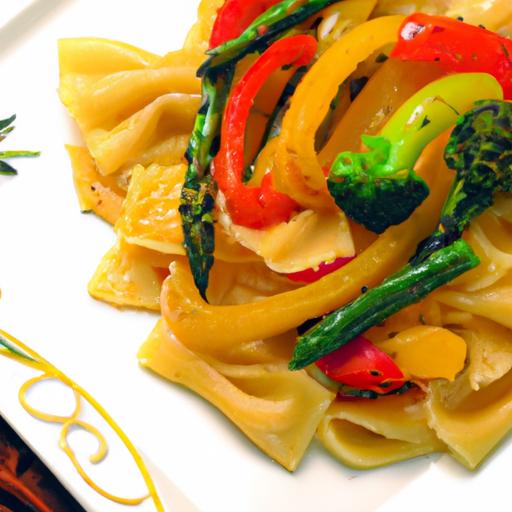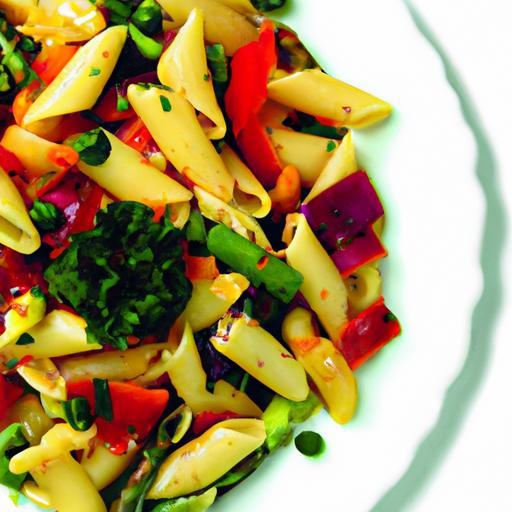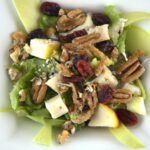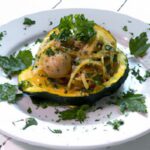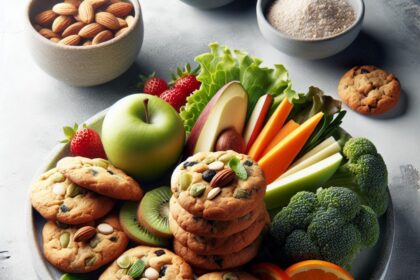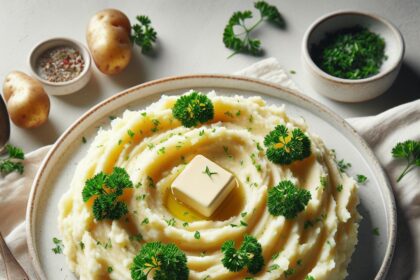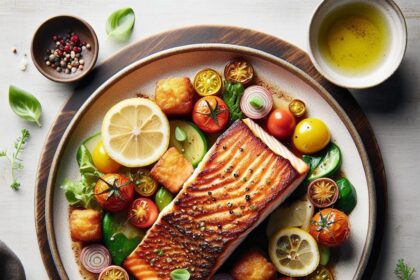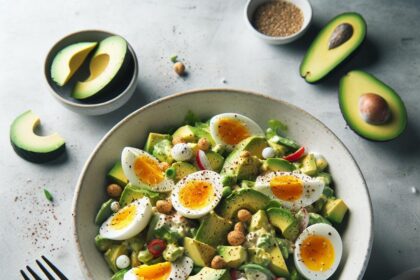There’s something magical about a plate of pasta primavera – a vibrant celebration of fresh veggies twirling in a dance of colors, textures, and flavors. But the secret to that perfect bite lies far beyond just tossing noodles and vegetables together. It starts in the kitchen, where thoughtful veggie prep transforms everyday ingredients into a culinary masterpiece that sings with freshness and vitality. In this article, we’ll unlock essential tips and tricks for prepping your vegetables like a pro, ensuring every forkful of your pasta primavera bursts with crispness, brightness, and that irresistible garden-fresh essence. Get ready to elevate your pasta night with veggies that dazzle and delight!
Fresh Veggie Prep Tips for Vibrant Pasta Primavera Delight
Fresh Veggie Prep Tips for Vibrant Pasta Primavera Delight transform a humble bowl of pasta into an explosion of color, flavor, and texture. This beloved Italian-American classic, originally crafted to celebrate spring’s bounty, comes alive when vibrant vegetables are selected and prepped with care. From the choice of crisp zucchinis and jewel-toned bell peppers to the delicate snap of sugar peas and crunchy asparagus, every element plays a vital role in delivering freshness and visual appeal. The secret lies not only in the veggies you choose but in the expert preparation that preserves their nutrients and elevates the dish to restaurant quality in your own kitchen.
Prep and Cook Time
- Preparation: 20 minutes
- Cooking: 15 minutes
- Total: 35 minutes
Yield
Serves 4 generous portions
Difficulty Level
Easy to Medium – perfect for home cooks eager to refine their technique
Ingredients
- 12 oz linguine or fettuccine pasta
- 1 medium zucchini, sliced into half-moons
- 1 cup cherry tomatoes, halved
- 1 cup asparagus tips, trimmed and cut into 2-inch pieces
- 1/2 cup yellow and red bell peppers, diced
- 1/2 cup sugar snap peas, trimmed
- 3 cloves garlic, minced
- 3 tbsp extra virgin olive oil
- 1/4 cup fresh basil leaves, chiffonade
- 2 tbsp fresh parsley, chopped
- 1 tsp lemon zest
- 1/2 tsp crushed red pepper flakes (optional)
- Salt and freshly ground black pepper to taste
- 1/4 cup grated Parmesan cheese (optional)
- 1 tbsp unsalted butter (optional, for extra silkiness)
Instructions
- Bring a large pot of salted water to a boil. Cook pasta until al dente, following package directions. Reserve 1 cup pasta water, then drain.
- Prepare vegetables while pasta cooks. Use a sharp chef’s knife to slice zucchini into uniform half-moons about 1/4 inch thick to maximize crunch without sacrificing tenderness. Dice bell peppers evenly for vibrant, bite-sized bursts.
- Blanch asparagus tips and sugar snap peas in boiling water for 1-2 minutes. Immediately transfer to an ice bath to halt cooking; this locks in their vivid color and crispness.
- Heat olive oil in a large skillet over medium heat. Add garlic, sautéing until fragrant and golden, about 1 minute. Avoid burning to prevent bitterness.
- Add zucchini and bell peppers to skillet. Sauté gently for 4-5 minutes, stirring occasionally to soften vegetables while keeping their texture intact.
- Gently fold in blanched asparagus, sugar snap peas, and cherry tomatoes. Cook 2-3 minutes until tomatoes soften slightly, releasing their juices and creating a natural sauce.
- Season with salt, black pepper, lemon zest, and red pepper flakes if using. Adjust seasoning to taste.
- Combine cooked pasta with sautéed vegetables. Toss together with reserved pasta water and butter if desired, creating a silky coating that clings to every strand.
- Finish with fresh basil and parsley, tossing lightly. Serve immediately, garnished with a sprinkle of Parmesan cheese if preferred.
Chef’s Notes: Tips for Success
- Veggie freshness is key. Choose vegetables that are firm and brightly colored-this ensures maximum flavor and texture.
- Master your knife skills. Consistent cuts not only look pretty but also cook evenly. Half-moons and bite-sized dices work best.
- Blanch-don’t overcook. A quick ice bath post-blanching halts heat and keeps color vibrant while sharpening the texture.
- Use pasta water wisely. The starches in reserved pasta water create a luscious sauce that embraces vegetables and pasta.
- Herb pairing matters. Fresh basil’s sweetness balances the bright veggies, while parsley adds freshness and depth. Try oregano or tarragon for an Italian twist.
- Make ahead. Prep and chop vegetables a day ahead and store in airtight containers to speed up cooking.
- Substitutions. Feel free to swap veggies with what’s seasonal or local-think sugar snap peas for green beans or summer squash for zucchini.
Serving Suggestions
Present this vibrant pasta primavera in shallow bowls to showcase the colors and textures of the fresh vegetables. Garnish with extra fresh basil leaves and a gravely grated layer of Parmesan. For added indulgence, drizzle a touch more extra virgin olive oil or a squeeze of fresh lemon juice to brighten every bite. A crisp side salad or a glass of chilled Sauvignon Blanc pairs beautifully to round out your meal. Enjoy this fresh, colorful dish warm for the ultimate pasta primavera delight experience!
| Nutrient | Per Serving |
|---|---|
| Calories | 320 kcal |
| Protein | 12 g |
| Carbohydrates | 48 g |
| Fat | 8 g |
Image: 
For more inspiring pasta dishes, check out our Ultimate Summer Pasta Guide. Explore vegetable blanching techniques in detail at Serious Eats.
Q&A
Q&A: Fresh Veggie Prep Tips for Vibrant Pasta Primavera Delight
Q1: What makes a pasta primavera truly vibrant and fresh?
A1: The secret lies in the quality and preparation of your veggies! Fresh, crisp vegetables bursting with color and flavor are the heart of a vibrant pasta primavera. Think young zucchinis, sweet cherry tomatoes, crisp bell peppers, and tender asparagus-each prepped to showcase its natural freshness.
Q2: How should I choose my vegetables for pasta primavera?
A2: Opt for veggies that are in season and at their peak ripeness. Seasonal freshness ensures vibrant colors and the best flavors. Look for firm textures, bright hues, and a sweet aroma. For example, spring is perfect for fresh peas and asparagus, while summer invites juicy tomatoes and sweet corn.
Q3: What’s the best way to prep veggies to keep them crisp and colorful?
A3: The key is gentle handling! Wash them thoroughly and pat dry to avoid sogginess. Use a sharp knife for clean, even cuts that cook evenly. Blanch tougher vegetables briefly in boiling water and then shock them in ice water to lock in color and crunch before tossing them into your pasta.
Q4: Should I peel or keep the skins on the vegetables?
A4: Whenever possible, keep the skins on! They add texture, nutrients, and a rustic charm to your dish. For example, thin-skinned zucchinis and carrots shine best unpeeled. However, tougher skins like on eggplants or older carrots may benefit from peeling for a smoother bite.
Q5: How can I enhance the flavors of fresh veggies without overpowering them?
A5: Light seasoning is your best friend. Use a drizzle of high-quality olive oil, a squeeze of lemon juice, fresh herbs like basil or thyme, and a pinch of sea salt. This simple approach lets the natural veggie flavors sing through in every forkful.
Q6: Is there a preferred order for adding veggies to the pasta?
A6: Absolutely! Start with the firmest veggies that need the longest cooking time-like carrots or broccoli-then add tender ones like zucchini or peas later on. This layering ensures every vegetable retains its ideal texture and vibrant color, creating a harmonious bite.
Q7: Any quick tips for reducing veggie prep time without sacrificing freshness?
A7: Yes! Prep veggies in advance and store them properly-blanched, cooled, and airtight in the fridge keeps them fresh and ready for a quick toss into your pasta. Also, using a mandoline or food processor can speed up slicing while keeping cuts uniform.
Q8: Can I mix raw and cooked veggies in pasta primavera?
A8: Definitely! A mix of lightly sautéed or blanched veggies with fresh, crunchy raw additions like cherry tomatoes or arugula adds exciting texture contrast and bursts of fresh flavor, elevating your primavera to a vibrant feast.
Q9: How do I maintain the vibrant look of the vegetables once the pasta is tossed?
A9: Toss veggies gently with cooked pasta off the heat, using a light touch with oil or butter to avoid wilting. Serve promptly to preserve that fresh, crisp appeal. A final garnish of fresh herbs or grated parmesan adds the perfect finishing flourish.
Q10: Any creative veggie combos you recommend for pasta primavera?
A10: Absolutely! Try sweet peas with asparagus tips and lemon zest for spring vibes; or roasted bell peppers, cherry tomatoes, and baby spinach for a smoky-sweet summer twist. The key is balancing colors, textures, and complementary flavors to keep your dish lively and fresh.
The Way Forward
As you chop, toss, and sauté your way to pasta primavera perfection, remember that the vibrant crunch and fresh flavors of your veggies are the true stars of the show. With these simple prep tips in your culinary toolkit, you’re not just cooking-you’re crafting a colorful experience that bursts with life in every bite. So, embrace the rhythm of rinsing, slicing, and seasoning, and let your vibrant veggies transform your pasta into a delightful masterpiece that’s as healthy as it is heavenly. Your taste buds-and your plate-will thank you.